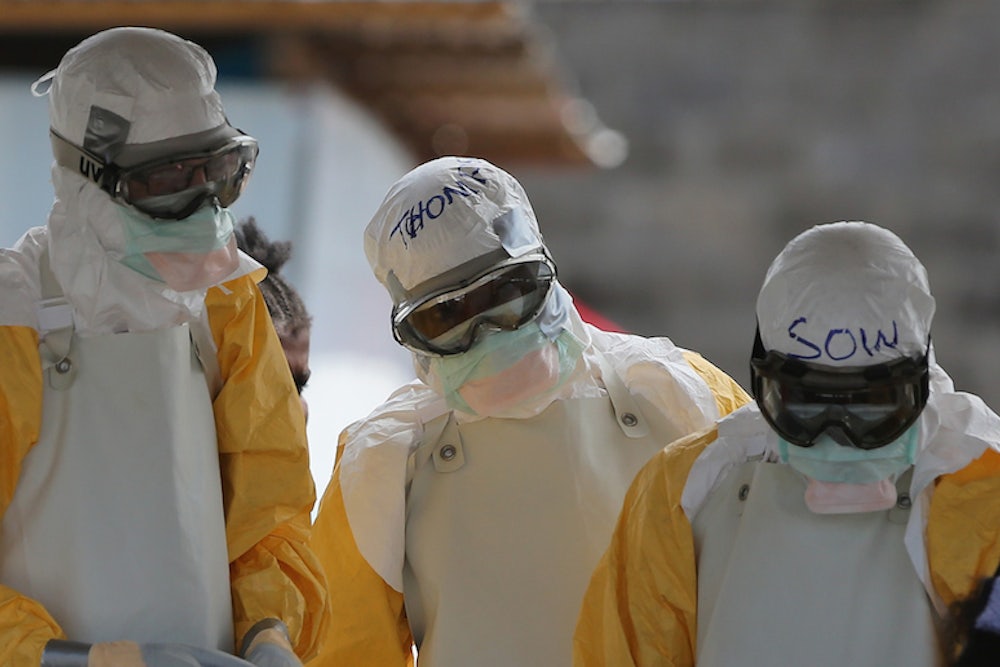As Jon Cohn reminds us this morning, the prognosis for Ebola patients is very different in the U.S. and West Africa: If an American patient is diagnosed early and treated with the most advanced drugs we have, their chance of survival can be as high as 90 percent. But the kind of care patients receive is not the only factor affecting who recovers from the disease. It turns out genetics also play an important role, according to a new paper in Science.
Angela Rasmussen and Michael Katze, scientists at the University of Washington’s Department of Microbiology, infected a genetically diverse population of mice with the Ebola virus at the labs of the National Institutes of Health in Montana. They began their study three years ago, long before the current outbreak.
Typically, “Lab mice are very inbred and have restricted coverage of the genetic diversity within that species,” Rasmussen explained. The mice they used, on the other hand, “Mimic the genetic diversity that you would see in a human population.”
Rasmussen and Katze infected all the mice with the same strain of the Ebola virus: The primary variable was their genetic makeup. They didn't try to treat or cure the mice, but focused instead on their reactions to the virus and found that the mice’s reactions to Ebola corresponded to their specific genetic lineage and that the distribution of their symptoms was similar to what they would see in a human population. All the mice lost weight in the first few days after infection, but about 20 percent were basically unaffected by the virus: They regained the weight within a couple of weeks, and their organs didn’t show any signs of damage. About 40 percent of the mice developed the hemorrhagic fever that’s a classic symptom of Ebola. Nearly 100 percent of these died. Some mice—like some humans—died without ever developing the hemorrhagic symptoms associated with Ebola.
“This research allows us to better understand which genes can predispose people to either resistance or susceptibility to Ebola infections,” says Rasmussen. “This model also represents an opportunity for us to test drugs, vaccines in a model of Ebola that reproduces what we see in human populations.”
Though this is the first study to show that genetics can determine the course of the Ebola virus, the news that mice—or people—react differently to the same strain of the same virus is unsurprising.
“Ebola is not any different than any other virus,” says Katze. “The 1918 influenza virus, which killed 50 million people, only had a case mortality of 2 percent. There were genetic factors; there were other factors. Although Ebola has a much higher mortality rate, it clearly doesn’t kill all people, and the type of care you get will affect the outcome.”
